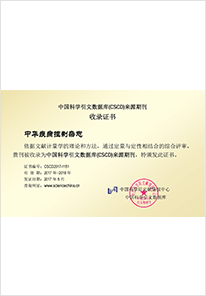2022 Vol. 26, No. 4
Display Method:
2022, 26(4): 373-375.
doi: 10.16462/j.cnki.zhjbkz.2022.04.001
Abstract:
2022, 26(4): 376-379.
doi: 10.16462/j.cnki.zhjbkz.2022.04.002
Abstract:
2022, 26(4): 380-385.
doi: 10.16462/j.cnki.zhjbkz.2022.04.003
Abstract:
2022, 26(4): 386-391.
doi: 10.16462/j.cnki.zhjbkz.2022.04.004
Abstract:
2022, 26(4): 392-396.
doi: 10.16462/j.cnki.zhjbkz.2022.04.005
Abstract:
2022, 26(4): 397-400.
doi: 10.16462/j.cnki.zhjbkz.2022.04.006
Abstract:
2022, 26(4): 401-405.
doi: 10.16462/j.cnki.zhjbkz.2022.04.007
Abstract:
2022, 26(4): 406-411.
doi: 10.16462/j.cnki.zhjbkz.2022.04.008
Abstract:
2022, 26(4): 412-416.
doi: 10.16462/j.cnki.zhjbkz.2022.04.009
Abstract:
2022, 26(4): 417-422.
doi: 10.16462/j.cnki.zhjbkz.2022.04.010
Abstract:
2022, 26(4): 423-429.
doi: 10.16462/j.cnki.zhjbkz.2022.04.011
Abstract:
2022, 26(4): 430-436.
doi: 10.16462/j.cnki.zhjbkz.2022.04.012
Abstract:
2022, 26(4): 437-441.
doi: 10.16462/j.cnki.zhjbkz.2022.04.013
Abstract:
2022, 26(4): 449-454.
doi: 10.16462/j.cnki.zhjbkz.2022.04.015
Abstract:
2022, 26(4): 455-462.
doi: 10.16462/j.cnki.zhjbkz.2022.04.016
Abstract:
2022, 26(4): 463-466.
doi: 10.16462/j.cnki.zhjbkz.2022.04.017
Abstract:
2022, 26(4): 473-476.
doi: 10.16462/j.cnki.zhjbkz.2022.04.019
Abstract:
2022, 26(4): 477-482.
doi: 10.16462/j.cnki.zhjbkz.2022.04.020
Abstract:
2022, 26(4): 483-489.
doi: 10.16462/j.cnki.zhjbkz.2022.04.021
Abstract:
2022, 26(4): 490-496.
doi: 10.16462/j.cnki.zhjbkz.2022.04.022
Abstract:


 Email alert
Email alert RSS
RSS Abstract
Abstract HTML
HTML PDF
PDF





